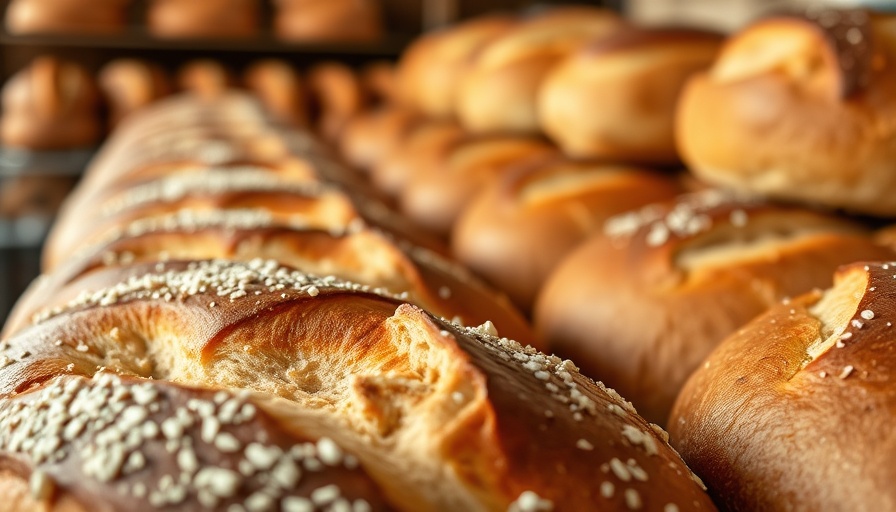
The Iconic Pav: More Than Just Bread
Pav, a soft and fluffy bread with a crusty top, represents a vital part of Mumbai's food heritage. It is not just a culinary delight—but a historical artifact that mirrors the city's growth and cultural evolution. This beloved bread arrived in India over 600 years ago with Portuguese traders, and since then, it has carved a niche for itself in the hearts of Mumbai’s working-class citizens. It became a go-to sustenance during the bustling 19th century when migrants flocked to the port city in search of better opportunities, primarily in the textile factories.
Mumbai's unique demographic profile, with its mix of blue-and-white collar workers along with a thriving film and finance industry, has shaped pav into more than just a staple food item. Today, it is a symbol of resilience and community, offered at mere cents but worth its weight in social value to many.
A Looming Crisis: The Ban on Wood-Fired Ovens
However, this rich history faces unprecedented challenges as the government pushes to ban wood-fired ovens across Mumbai's bakeries in a bid to combat air pollution. A report by the Bombay Environmental Action Group highlighted severe health risks associated with emissions from these ovens, likening the pollution in some neighborhoods to that of smoking 400 cigarettes a year. In response, city officials aim to transition bakeries to cleaner fuel sources.
Despite the intent to protect public health, many local bakers argue that this decision could price them out of the market. Wood-fired ovens impart a unique flavor to pav that is irreplaceable, and moving to gas or electric ovens may not replicate the beloved smoky taste that locals adore.
Social Impact: A Bread for All
The potential loss of pav would extend beyond the flavor; it represents a loss of cultural identity for many. "Pav is what Bombay's working-class blue-collar workers were eating, especially those who were far from home without the infrastructure to create Indian food for them," noted Mumbai-based food anthropologist Kurush Dalal. In light of the city's rapid modernization, preserving pav is vital for the continuation of its local culture.
Historically, pav has been integral to life in Mumbai, often accompanying favorite dishes like vada pav and pav bhaji—essential snacks for many working individuals. The idea of losing this culinary staple raises questions not only about food accessibility but also about the means through which communities connect over shared meals.
The Ripple Effect: Economic Considerations
There is concern among economists and business professionals regarding how this potential disruption could affect the bakery industry, small business owners, and the local economy. As bakeries pivot to new fuel options, operational costs may surge, leading to increased prices for consumers—even as demand for pav remains high.
As someone who operates in tech-driven and marketing-centric industries, CEOs and marketing managers must consider the implications of these economic shifts on public health, community behavior, and consumer needs. Supporting local businesses during this transition may not only resonate well with the community but can also present opportunities for restoring a piece of culinary heritage that seems to be vanishing. This thread reflects broader societal challenges as businesses adapt to environmental concerns—all while striving to maintain cultural integrity.
A Conscious Choice: Navigating Future Implications
The issue at hand transcends pav itself, ultimately touching on factors like sustainability, innovation, and public welfare. The upcoming shift could be indicative of a larger trend towards environmentally-friendly practices, suggesting a moment of reckoning for industries, from food to technology, that rely on traditional processes.
Businesses might embrace the challenge by innovating ways to reduce their ecological footprints while still delivering on quality—an opportunity that aligns with growing consumer desires for responsible production. As businesses, it’s essential to contemplate how to engage with the community in thoughtful ways that are attuned to both sustainability goals and cultural preservation.
Conclusion: Embracing Change While Honoring Tradition
As Mumbai stands at a crossroads between environmental policy and cultural preservation, the fate of pav hangs in the balance. The decisions made by city officials and bakery owners in the coming months are a reflection of broader societal values concerning health, sustainability, and cultural heritage.
As this debate unfolds, it's crucial for both consumers and business leaders to champion local favorites—like pav—finding ways to adapt and innovate without losing the essence of what makes these foods significant to the community.
There is a call to action for business professionals to get involved in local discussions surrounding this pivotal change while supporting initiatives aimed at safeguarding beloved cultural elements. Maintaining a connection to local traditions like pav could pave the way for a more inclusive dialogue about our collective future in a rapidly changing world. Add Row
Add Row  Add
Add 




 Add Row
Add Row  Add
Add 

Write A Comment